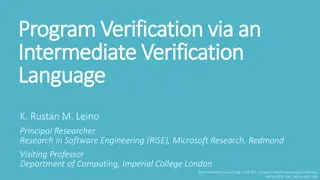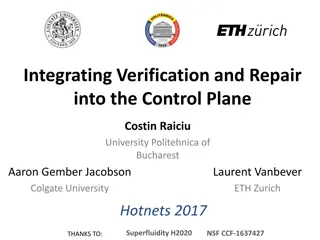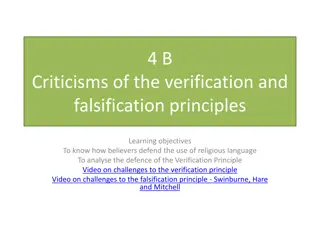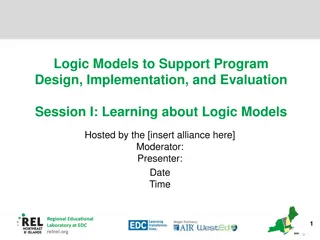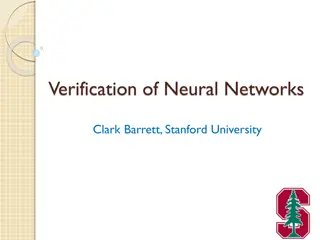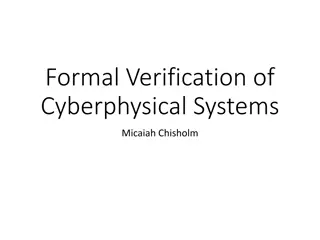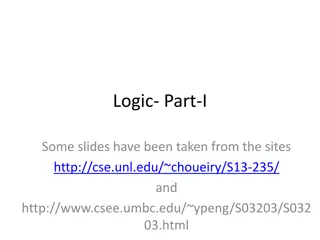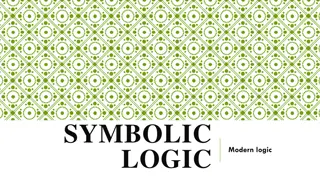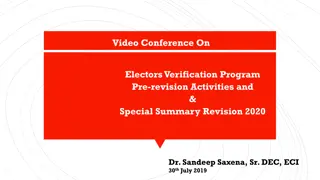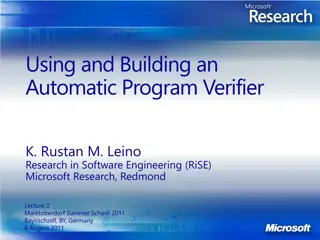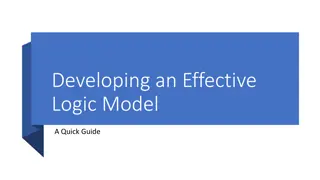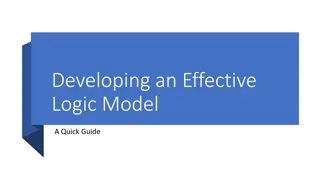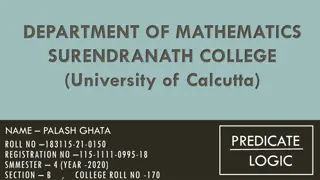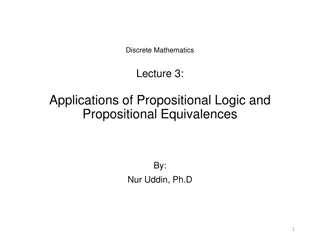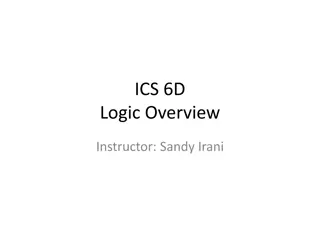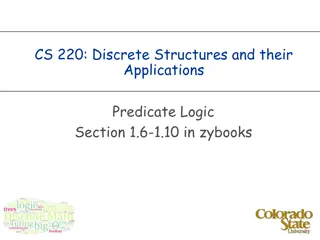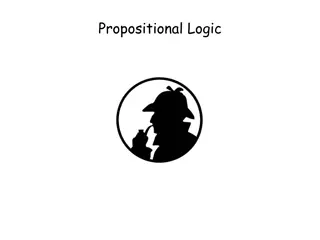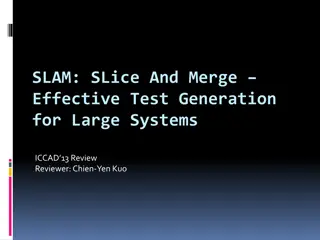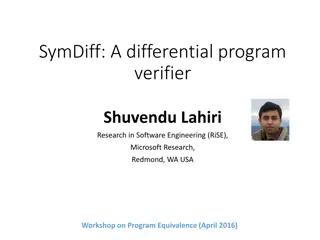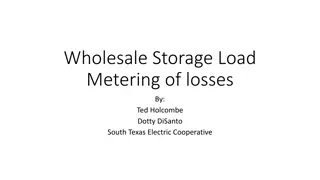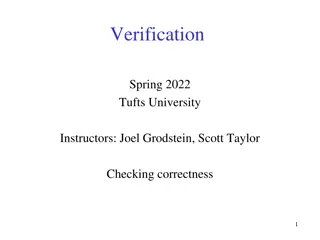Next-Generation Logic for Program Verification Challenges
Explore the innovative work by Gennaro Parlato and collaborators on a new logic for reasoning with programs that manipulate heap and data using deductive verification and SMT solvers. This research delves into the complexities of unbounded structures and data, addressing challenges in classical theories and proposing solutions with a good balance of expressiveness, decidability, and efficiency. Discover advancements in logic that aim to tackle real-world program verification tasks effectively.
Uploaded on Sep 14, 2024 | 0 Views
Download Presentation

Please find below an Image/Link to download the presentation.
The content on the website is provided AS IS for your information and personal use only. It may not be sold, licensed, or shared on other websites without obtaining consent from the author. Download presentation by click this link. If you encounter any issues during the download, it is possible that the publisher has removed the file from their server.
E N D
Presentation Transcript
Gennaro Parlato (LIAFA, Paris, France) Joint work with P. Madhusudan Xiaokang Qie University of Illinois at Urbana-Champaign
A new logic to reason with programs that manipulate heap + data using deductive verification SMT solvers 75 Program new(x); x->next=y->next->next; y=nil; x->data = y->data +1; free(x); 157 14 5 15 23 1000 7 1 90
One of the least understood class of theories Both structures and data can be unbounded This roles out immidiately classical combination of theories, like Nelson-Oppen scheme Undecidable (even meaningful restrictions)
A logic that is: Decidable Expressive enough to state useful properties Efficient in practice on real-wold programs We try to give a solution that has a good balance overall the goals!
HAVOC (Lahiri, Qadeer: POPL08) Decidable: YES Expressive: NO (doubly-linked lists cannot be expressed) Efficient: YES on simple programs CSL (Bouajjani, Dragoi, Enea, Sighireanu: CONCUR 09) Decidable: YES Expressive: NO extends HAVAC to handle constraints on sizes of structures still weak (properties of binary trees of unbounded depth cannot be expressed) Efficient: ? (no implementation is provided) The technique to decide the logic is encoded in the syntax Hard to extend or generalize
Defines a set of graphs that which are interpreted over regular trees R = ( Tr, validnode, {nodea}a Lv , {edgeb}b Le ) Family of binary predicates Le is a finite set of edge labels Family of unary predicates. Lv is a finite set of node labels MSO formula on k-ary -lab trees Unary predicate R defines a class of graphs For every tree T=(V,->) accepted by Tr, graph(T) = ( N, E, labnodea, labedgeb ) labedgeb(u,v) =true <=> u,v N edgeb(u,v)=true labnodea(v) =true <=> v N nodea(v)=true { v V | validnode(v)} {(u,v) | b Le & edgeb(u,v) }
En (s,t)= leaf(s) leaf(t) z1, z2, z3. ( El(z3,z1) RightMostPath( z1, s) Er(z3,z2) LeftMostPath( z2, t) ) z3 z1 z2 t s Some data structures that can be expressed: Nested lists Cyclic and doubly-linked lists Threaded trees
xn. ym. (xn,ym) is an Monadic Second Order (MSO) formula that combines heap structures and data, where the data-constraints are only allowed to refer to xnand ym Syntax of STRAND DATAExpression e::= data(x) | data(y) | c | g(e1,...,en) Formula ::= (e1,...,en) | (v1,...,vn) | | 1 2| 1 2 | z S | z. | z. | S. | S. Formula ::= | y. STRAND ::= | x.
left right right left right left right left right right right left left leftbranch(y1, y2) z. (left(y1, z) z y2) rightbranch(y1, y2) z. (right(y1, z) z y2) bst y1 y2. ( leftbranch(y1,y2) data(y2) < data(y1) ) ( rightbranch(y1,y2) data(y1) data(y2) )
bstSearch (pre: bst x.(key(root) = k)) Node curr=root; (loop-inv: bst x.(reach(curr,x) key(curr)=k)) while ( curr.key!=k && curr!=null ){ if (curr.key>k) curr=curr.left; else curr=curr.right; } (post: bst key(curr) = k)
Given a linear block of statements s a STRAND pre-condition P and a post-condition Q expressed as a Boolean combination of STRAND formulas of the form xn. (xn), ym. ( ym) checking the validity of the Hoare triple {P} s {Q} reduces to the satisfiability of STRAND Satisfiability of STRAND is undecidable We identify a decidable fragment of STRAND semantically defined by using the notion of satisfiability-preseving embeddings
For two structure T, S (with no data) S satisfiability-preservingly embeds into T w.r.t. if there is an embeddings of the nodes of S in T such that no mutter how the data-logic constraints are interpreted if T satisfies then also S satisfies by inhering the data-values T S
Checking the satisfiability we ignore T and check only S Satisfiability is done only on the minimal models STRANDdec is the class of the formulas that has a finite set of minimal models Satisfiability reduces to the satisfiability of the quantifier-free theory of the data-logic
Let =xn.ym.(xn, ym) be a STRAND formula over a recursively data-structure R define a new rec. data-structure R that encoperates the existentally quantified variables of xn as pointers in R (unary predicate Vali for the var xi ) define = xn ym. (( i=1, ,n Vali(xi)) => (xn, ym)) Claim: is satisfiable on R iff is satisfiable on R
Let =yn. (yn) be a STRAND formula, and 1, ,r be the atomic relational formulas of the data-logic. Define the pure MSO formula = yn. b1, , br. (yn,b1, , br) where is obtained by replacing i with the predicate bi Example: sorted : y1,y2. ( (y1->*y2 ) => data(y1) data(y2)) sorted : y1,y2. ( (y1->*y2 ) => b1 ) Claim: if is satisfiable on a recursive data-structure R then is also satisfiable on R. The other direction does not hold OVER-APPROXIMATION
Let T be a tree defining a graph of the given Rec. Data-structure A subset S of nodes of T is valid : Not-empty & least-ancestor closed The subtree defined by S also defines a RDS Submodels can be defined in MSO
S satisfiability-preservingly embeds in T iff no matter how T satisfies the formula using some valuation of the atomic data-relations, S will be able to satisfy the formula using the same valuation of the atomic data- relations T S MinModel = \* pure MSO formula *\ yn. b1, , br. (yn,b1, , br) X. ( NonEmpty(X) ValidSubModel(X) ( ym. b1, , br. ( i [m] (y S) interpret( (yn,b1, , br)) => tailor( (yn,b1, , br)) ) )
Transform MinModels to tree-automaton TA Check finiteness for TA Extract all trees accepted by TA: 1, , t For each i build the finite graph gi Create a quantifier-free formula i for gi Create a data-variable for each node sare expanded in conjunctions sare expanded in disjunctions Data-constraints in STRAND are directly written in the data-logic The quantifier-free formula i=1, ,t i is a pure data-logic formula that is satisfiable iff the original formula is satisfiable on R
Hoare-triples: ( (R, Pre), P, Post ) R Pre STRAND , P: Is Strand Satisfiable over RP ? Node t = newhead; newhead = head; head = head.next; newhead.next = t; Post STRAND , Idea: capture the entire computation of P starting from a particular recursive data-structure R using a single data-structure RP
Error = i [m](PreRp j[i 1]j errori ) ViolatePost = PreRp j [m] j PostRp Theorem The Hoare-triple (R, Pre, P, Post) does not hold iff the STRAND formula Error ViolatePost is satisfiable on the trail RP
Verification Condition Structural Solving (MONA) Data Constraint Solving (Z3) Programs Bound #nodes In STRANDdec ? # states Final BDD size Time (sec) Graph model Exists? Formula size (kB) Satisfiabl e ? Time (sec) before-loop in-loop after-loop Yes Yes Yes 67 131 67 264 585 264 0.34 0.59 0.18 No No No - - - - - - - - - - - - sorted- list-search before-head before-loop in-loop after-loop Yes Yes Yes Yes 73 298 1290 6156 680 1.66 0.38 4.46 13.93 Yes No No Yes 5 - - 7 6.2 No - - No 0.02 sorted- List-insert 259 1027 146 - - - - 14.5 0.02 sorted-list- insert -err before-loop Yes 298 1519 0.34 Yes 7 9.5 Yes 0.02 before-loop in-loop after-loop Yes Yes Yes 35 513 129 119 2816 576 0.24 2.79 0.35 No No No - - - - - - - - - - - - sorted-list- reverse before-loop in-loop Yes Yes 52 160 276 1132 5.03 32.80 No Yes - 9 - - - Bst-search 7.7 N0 0.02
bstSearch (pre: bst x.(key(root) = k)) Node curr=root; (loop-inv: bst x.(reach(curr,x) key(curr)=k)) while ( curr.key!=k && curr!=null ){ if (curr.key>k) curr=curr.left; else curr=curr.right; } (post: bst key(curr) = k)
http://cs.uiuc.edu/~qiu2/strand/ Code Experiments Table of the experiments
We have presented STRAND a logic for reasoning about structures and data which has good balance among Decidability Expressiveness Efficiency We believe this work breaks new ground in combining structures and data may pave the way for defining decidable fragments of other logics
Powerful and decidable syntactic fragments Back-and-forth connection between the structural part and the data part Extend Separation logic with data



